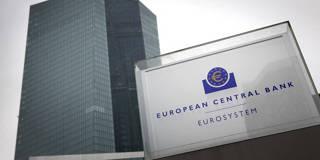In hindsight, it is clear that central banks’ massive bond-buying programs were a colossal mistake. But even at the time, some warned that they carried serious fiscal risks, which are now being realized as interest rates rise.
ROME – In accumulating massive bond holdings over the course of a decade of quantitative easing (QE), central banks were effectively betting that interest rates would stay low indefinitely. They have lost that wager.
Economists agree: central banks’ bond-buying programs constitute a quasi-fiscal policy, as monetary authorities finance their purchases of long-term government bonds by issuing short-term reserves to commercial banks. Until recently, this seemed to be good business. While the bonds technically yielded little, the cost of financing was so low (-0.5% in the eurozone, for example) that central banks reaped profits anyway.
But with inflation skyrocketing, reaching double-digit rates in many countries, central banks have had little choice but to increase their policy rates rapidly. This has raised the costs of financing, with short-term rates now exceeding long-term bond yields. As a result, the fiscal risks of bond-buying programs are being realized, with central banks facing losses on their holdings.

ROME – In accumulating massive bond holdings over the course of a decade of quantitative easing (QE), central banks were effectively betting that interest rates would stay low indefinitely. They have lost that wager.
Economists agree: central banks’ bond-buying programs constitute a quasi-fiscal policy, as monetary authorities finance their purchases of long-term government bonds by issuing short-term reserves to commercial banks. Until recently, this seemed to be good business. While the bonds technically yielded little, the cost of financing was so low (-0.5% in the eurozone, for example) that central banks reaped profits anyway.
But with inflation skyrocketing, reaching double-digit rates in many countries, central banks have had little choice but to increase their policy rates rapidly. This has raised the costs of financing, with short-term rates now exceeding long-term bond yields. As a result, the fiscal risks of bond-buying programs are being realized, with central banks facing losses on their holdings.